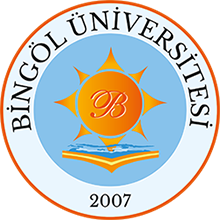Pekmez Tüketimini Etkileyen Faktörler: Bingöl Sivan Dut Pekmezi Örneği
Özet
ÖZET:
Bu çalışmanın amacı, coğrafi işaret belgesine sahip olan Bingöl Sivan Dut Pekmezi
tüketicilerinin, tüketim davranışlarını ve tercihlerini ortaya koymaktır. Ayrıca Sivan Dut
Pekmezinin sağlık ve beslenme üzerindeki olumlu etkilerinden faydalanmak, gıda
endüstrisine yeni bir ürün kazandırmak ve bununla birlikte yerel kalkınmaya sağlayacağı
olumlu etkileri ön plana çıkarmaktır. Bu kapsamda Bingöl ili merkez mahallelerinde
tüketicilerle yüz yüze görüşülmüş ve toplamda 385 adet anket yapılmıştır. Yapılan anket
sayıları mahalle nüfuslarının toplam nüfusa olan oranlarına göre dağıtılmıştır.
Analizlerde çok değişkenli istatistiki analiz uygulamalarından olan
Cluster(Kümeleme) analizi kullanılmıştır. Buna göre yapılan analiz sonucunda tüketicilerin
%35.3’ü (136 tüketici/ortalama gelir:17.892 TL) orta gelir grubunda, %6.0’sı (23
tüketici/ortalama gelir: 28.400 TL) yüksek gelir grubunda ve %58.7’si (226
tüketici/ortalama gelir: 11.997 TL) düşük gelir grubunda yer aldığı belirlenmiştir. Her üç
grubun Sivan dut pekmezi satın alım ve tüketim tercihlerinde benzerlikler ve farklılıklar
tespit edilip açıklanmıştır.
Araştırma kapsamında tüketicilerin Sivan dut pekmezi satın alımında dikkate
aldıkları faktörlerin tespit edilmesi amacıyla çok değişkenli istatistiki analiz
uygulamalarından olan faktör analizi uygulanarak 24 değişken 6 değişkene indirgenmiştir.
Birinci faktör: Pekmezin Sağlığa Yararlı Olduğuna İnanan Tüketici
İkinci faktör: Yerel Ürüne Önem Veren Tüketici
Üçüncü faktör: Satın Almada Çevreyi Önemseyen Tüketici
Dördüncü faktör: Yerel Pekmezin Özgünlüğüne Önem Veren Tüketici
Beşinci faktör: Ambalajlamaya Önem Veren Tüketici
Altıncı faktör: Kalite ve Fiyata Önem Veren Tüketici
Bu 6 faktörün toplamının toplam varyansın %60.68’ini açıkladığı ve yapılan analizde
KMO test değerinin 0.772 gibi bir değerle kullanılan değişkenlerin faktör analizi için uygun
olduğu görülmüştür. ABSTRACT:
The aim of this study is to reveal the consumption behaviors and preferences of
Bingöl Sivan Mulberry Molasses consumers who have a geographical indication certificate.
In addition, our aim is to benefit from the positive effects of Sivan Mulberry Molasses on
health and nutrition, to introduce a new product to the food industry and to highlight its
positive effects on local development. In this context, consumers were interviewed face to
face in the central neighborhoods of Bingöl province and a total of 385 surveys were
conducted. The number of surveys conducted was distributed according to the ratio of
neighborhood populations to the total population.
Cluster analysis, one of the multivariate statistical analysis applications, was used in
the analyses. Accordingly, as a result of the analysis, it was determined that 35.3% of the
consumers were in the middle income group, 6.0% were in the high income group and
58.7% were in the low income group. The average income of consumers in the middle
income group was calculated as 17,892 TL, and the income of consumers in the high income
group was calculated as 28,400 TL. Income per household in the low-income group was
11,997 TL. Similarities and differences in Sivan mulberry molasses purchasing and
consumption preferences of all three groups were identified and explained.
Within the scope of the research, 24 variables were reduced to 6 variables by
applying factor analysis, which is one of the multivariate statistical analysis applications, in
order to determine the factors that consumers consider when purchasing Sivan mulberry
molasses.
• First factor: Consumers who believe that molasses is beneficial to health
• Second factor: Consumer who Cares About Local Products
• Third factor: Consumer who cares about the environment in purchasing
• Fourth factor: Consumers who Care About the Originality of Local Molasses
• Fifth factor: Consumer Who Gives Importance to Packaging
• Sixth factor: Consumer Who Cares About Quality and Price
It was seen that the sum of these 6 factors explained 60.68% of the total variance and
that the variables used in the analysis were suitable for factor analysis with a KMO test
value of 0.772.
Koleksiyonlar

DSpace@BİNGÖL by Bingöl University Institutional Repository is licensed under a Creative Commons Attribution-NonCommercial-NoDerivs 4.0 Unported License..













